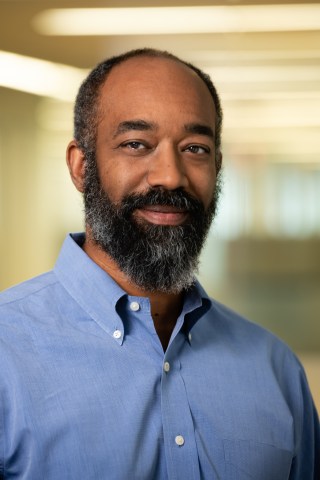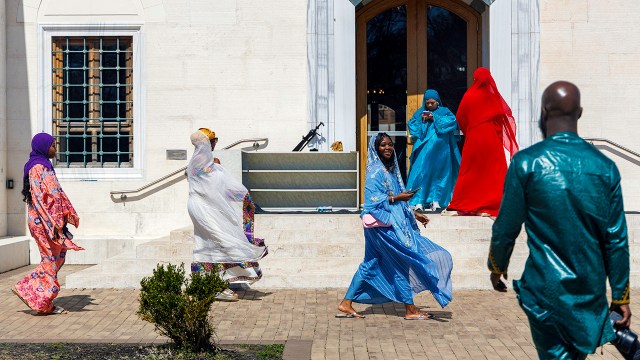
Muslims have been the focus of considerable public attention in recent decades, but the American public knows relatively little about Islam and most Americans don’t know a Muslim personally, according to a 2019 Pew Research Center survey. Muslims make up only about 1% of the adult population in the United States.
Since Muslims make up a relatively small share of the overall U.S. population, most surveys can’t describe the ways in which they are similar to, or different from, other Americans. Pew Research Center’s 2023-24 Religious Landscape Study (RLS) is an exception. With more than 36,000 total respondents, this survey is able to provide a closer look at Muslims in the U.S. – and reveals a rich diversity within the U.S. Muslim population.
For example, some Muslims are highly religious while others say religion is not at all important in their lives (which is also the case among the majority-Christian population in the U.S.). Many Muslims were born outside the U.S., but no one racial or ethnic group forms a majority of Muslim Americans. And while roughly a third of all Muslim adults are under the age of 30 – making Muslims much younger, on average, than Americans as a whole – there are still hundreds of thousands of Muslim ages 65 and older in the U.S.
In this analysis, we’ll take a closer look at the religious habits and demographic characteristics of U.S. Muslims, based on the RLS and other Center surveys.
Religious commitment
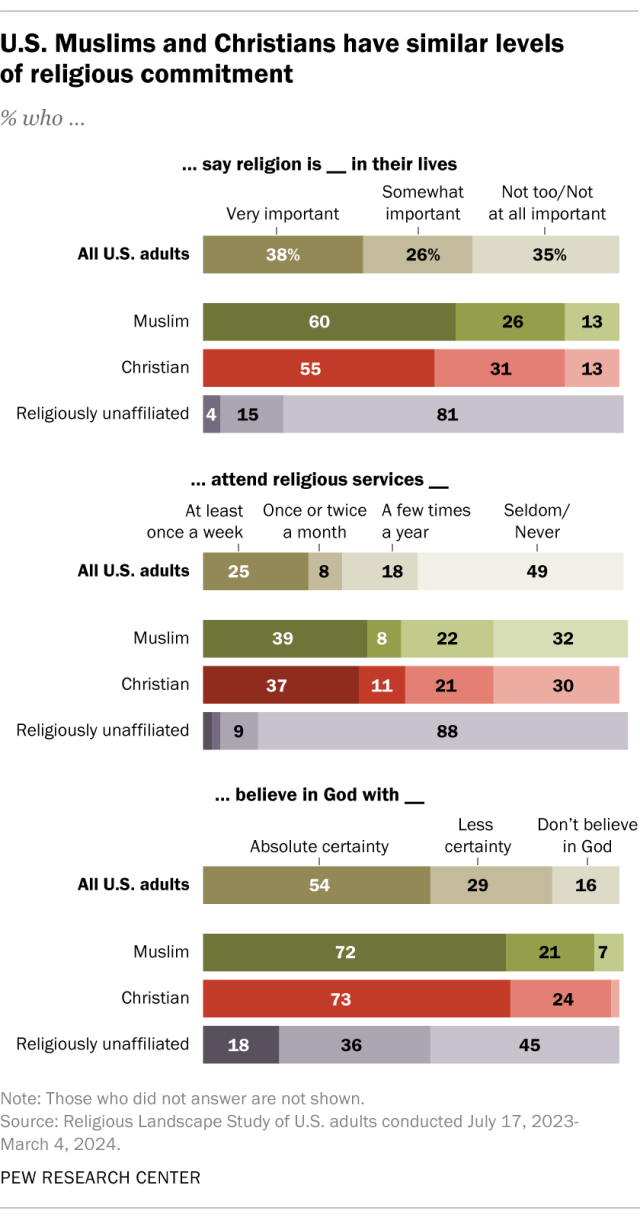
Six-in-ten Muslim adults say religion is very important in their lives. By this measure, Muslims are about as religious as Christians, 55% of whom say religion is very important in their lives.
Muslims also are about as likely as Christians to say they believe in God. Around nine-in-ten Muslims (93%) say they believe in God or a higher power, including 72% who say they are absolutely certain that God exists. By comparison, 97% of Christians say they believe in God or a higher power. This includes 73% who are absolutely certain in their belief.
Muslims and Christians also attend religious services at similar rates: 39% and 37%, respectively, say they go at least once a week. This similarity in attendance is noteworthy because the weekly Muslim communal prayer takes place during the work week (midday on Friday).
The RLS also asked Americans how often they pray. Canonically, Muslims are encouraged to perform the salah prayer ritual five times each day. The RLS found that 59% of Muslims say they pray “several times a day,” while 28% pray regularly, but less often than that. The remaining 13% say they seldom or never pray.
While the RLS did not distinguish between the salah prayer ritual and more informal prayers, the share of Muslims who say they pray several times a day is roughly the same as the share who said in a previous Center survey that they perform at least some of the five salah daily.
Race and country of birth
Most Christians and religiously unaffiliated Americans are White, but no one racial or ethnic group forms a majority among U.S. Muslims. Roughly 30% are White, 30% are Asian, 20% are Black, 11% are Hispanic and 8% either identify with a different race or more than one racial group.
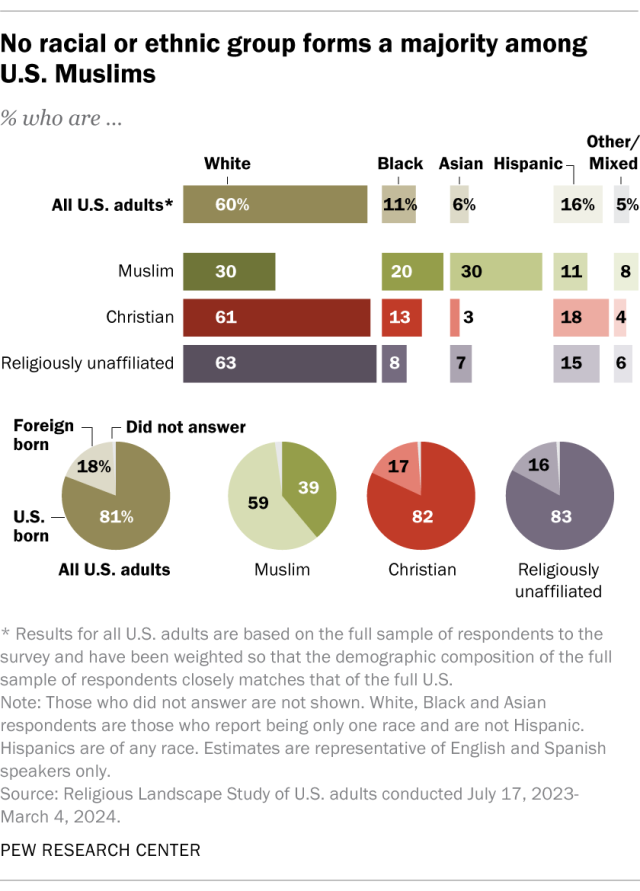
There also is a great deal of ethnic diversity that our survey questions do not capture. For example, Arabs from the Middle East or North Africa are classified as “White” racially, in accordance with the Census Bureau’s approach. The classification of ethnic groups including Arabs, Turks and Iranians has an especially large impact on U.S. Muslims because more than half of all Muslim adults in the U.S. (59%) were born in another country. In contrast, 17% of Christians and 16% of religious unaffiliated Americans were born outside the U.S.
Education, age and parenthood
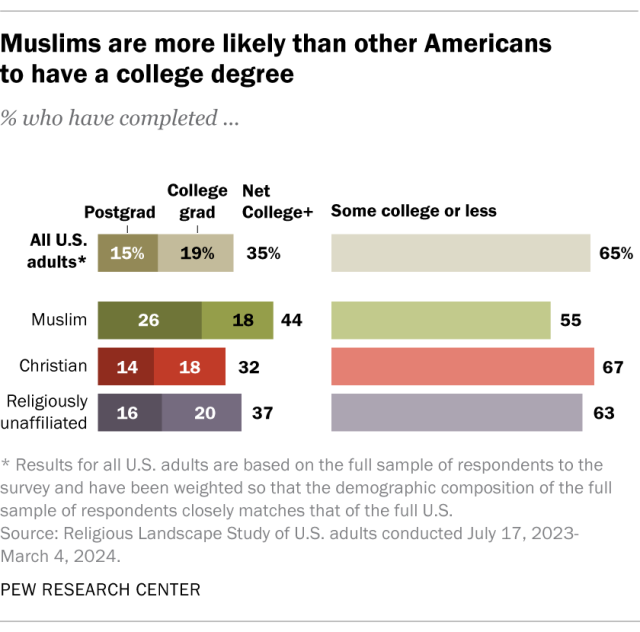
Muslims tend to be more highly educated than Christians or unaffiliated Americans. Some 44% of Muslim adults are college graduates, including 26% who have a master’s, doctorate or other postgraduate degree. In comparison, 14% of Christians and 16% of religiously unaffiliated adults have advanced degrees.
Muslims also are much more likely than Americans of other religious backgrounds to be current students. Three-in-ten Muslim adults don’t have a college degree but are current students, compared with 6% of Christians and 10% of religiously unaffiliated adults.
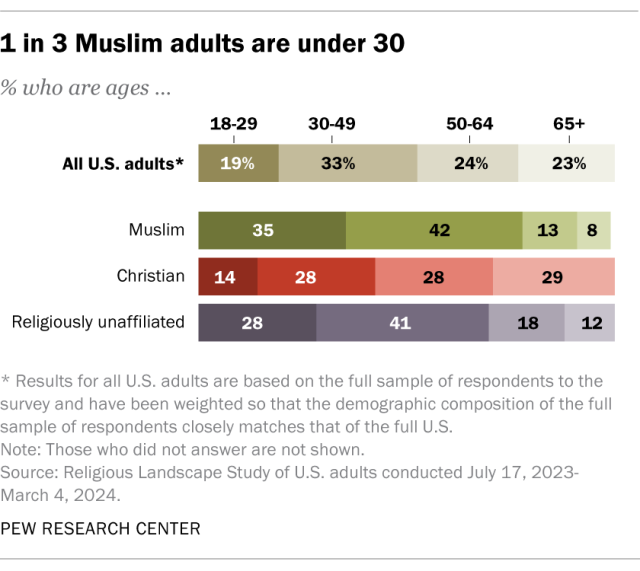
One reason such a large share of Muslims are current students may be that Muslims tend to be significantly younger than other U.S. adults. Roughly one-in-three Muslim adults (35%) are ages 18 to 29, compared with 14% of Christians and 28% of religiously unaffiliated Americans.
In turn, Christians and “nones” (i.e., those who identify religiously as atheist, agnostic or “nothing in particular”) are more likely than Muslims to be 50 or older. Just 8% of Muslims are at least 65 years old.
The relative youth of Muslim adults also may help explain why a large share of them are currently raising children. About four-in-ten Muslims (42%) say they are the parent of a minor child living in the home. That compares with 27% of Christians and 29% of religious unaffiliated adults.
